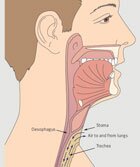All about Audit Data
How do I choose the right method of collecting data?
You must plan the methodology in detail to consider the most effective and accurate way of collecting the data you require. You must decide whether you will look back at existing data (retrospective) or collect data as it happens (prospective). You must also ensure that your sample size is large enough to be representative of the population, condition or process you are auditing.
How do you analyse your audit data?
The purpose of data analysis is to find evidence to answer the questions posed by the audit objectives. Although quantitative and qualitative methods should compliment each other they do provide different perspectives and answer different questions within any one broad area.
There are two main types of data analysis:
Quantitative data : is concerned with counting and measuring, auditing patients who for example received good pre-operative information regarding processes -v- patients who didn't receive such good information. It would show improvement or failure of the input of clinical audit to the healthcare system, but would not necessarily be able to show that the data collected was either significantly good or bad.
Qualitative data : on the other hand is more of a social science, concerned about how people think and behave in the way that they do. With specially tailored questions good and bad data could be identified. It allows for a richer 'pool' of answers that may have been missed in applying a quantitative approach.








